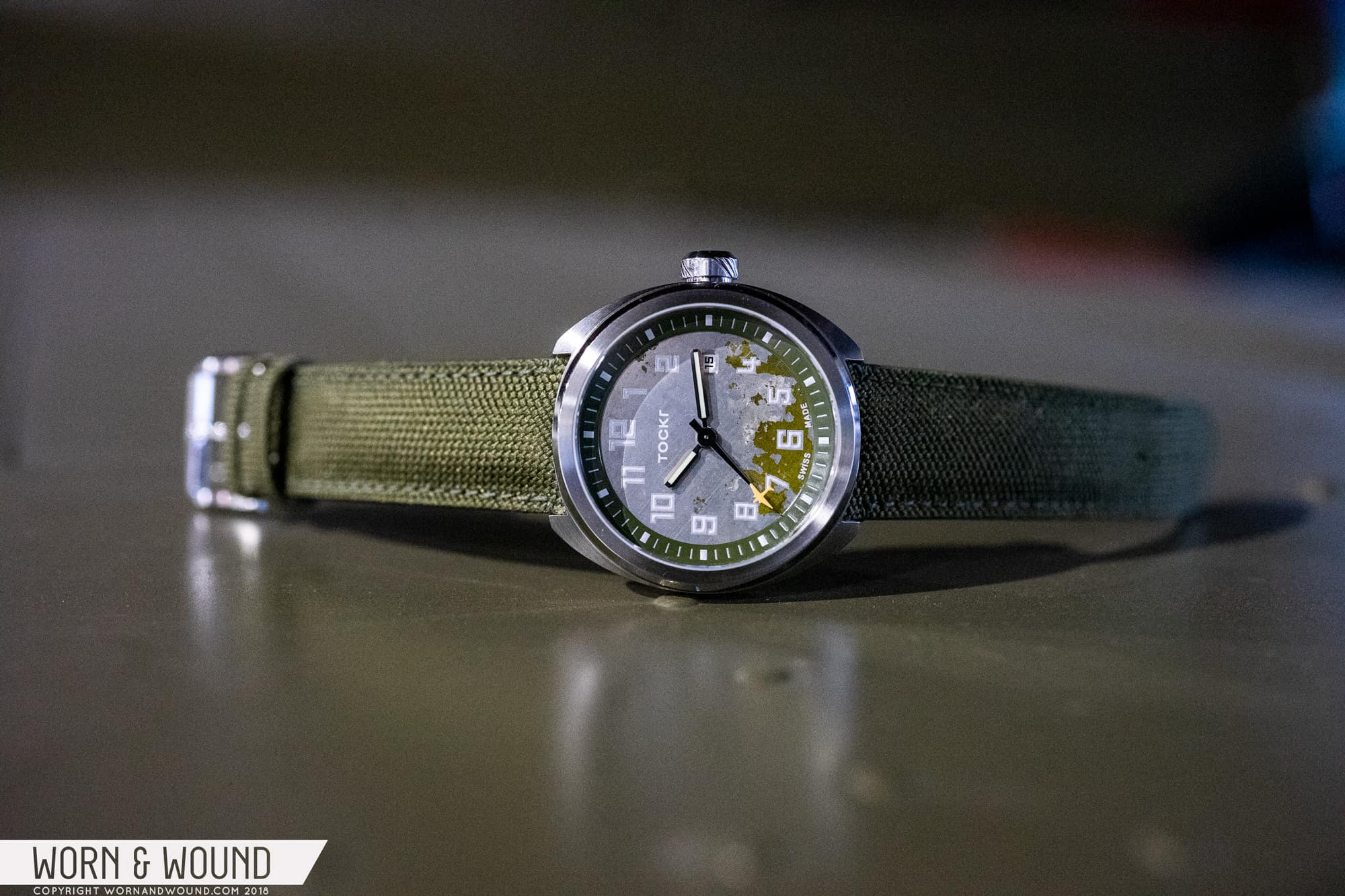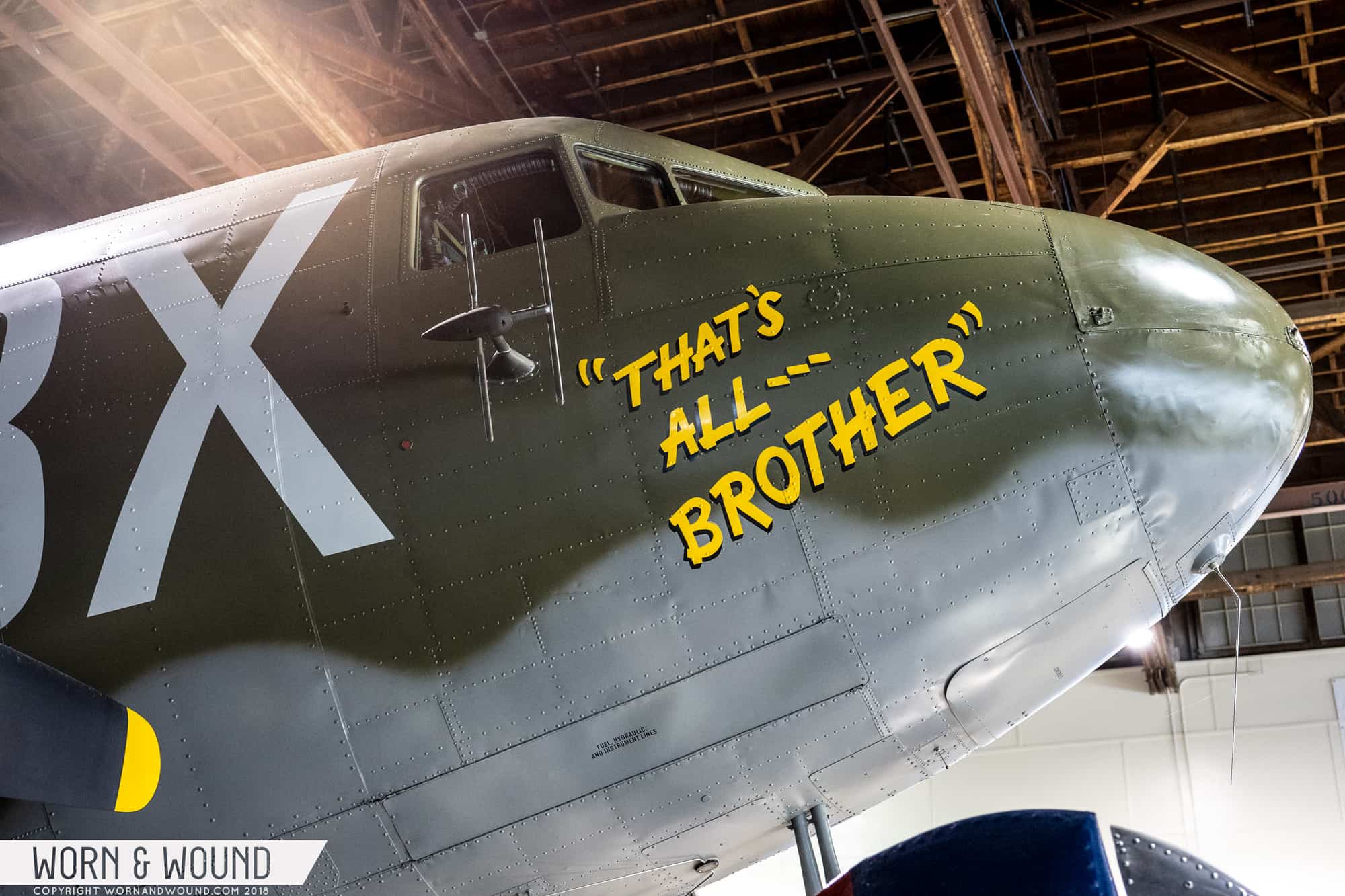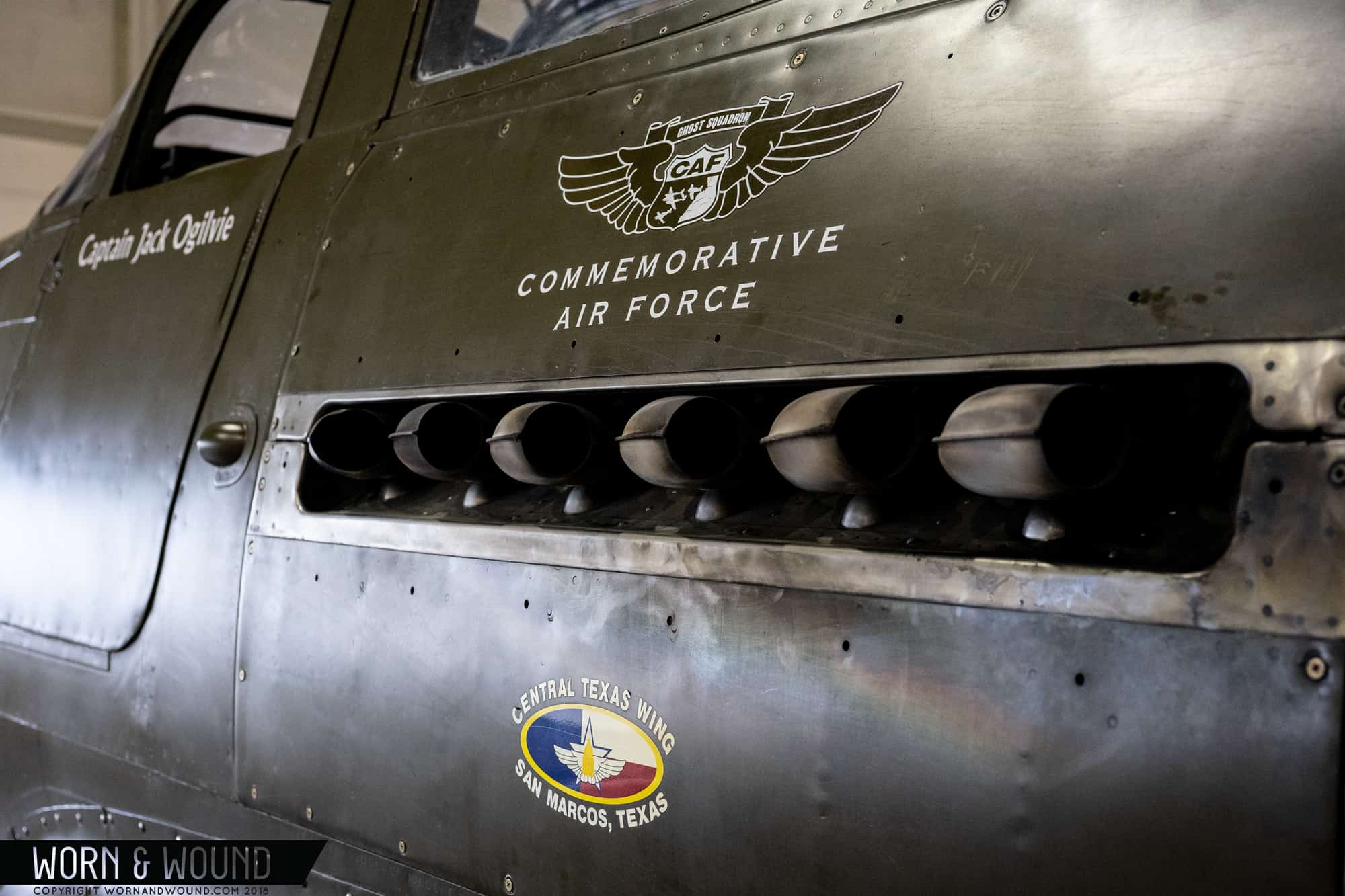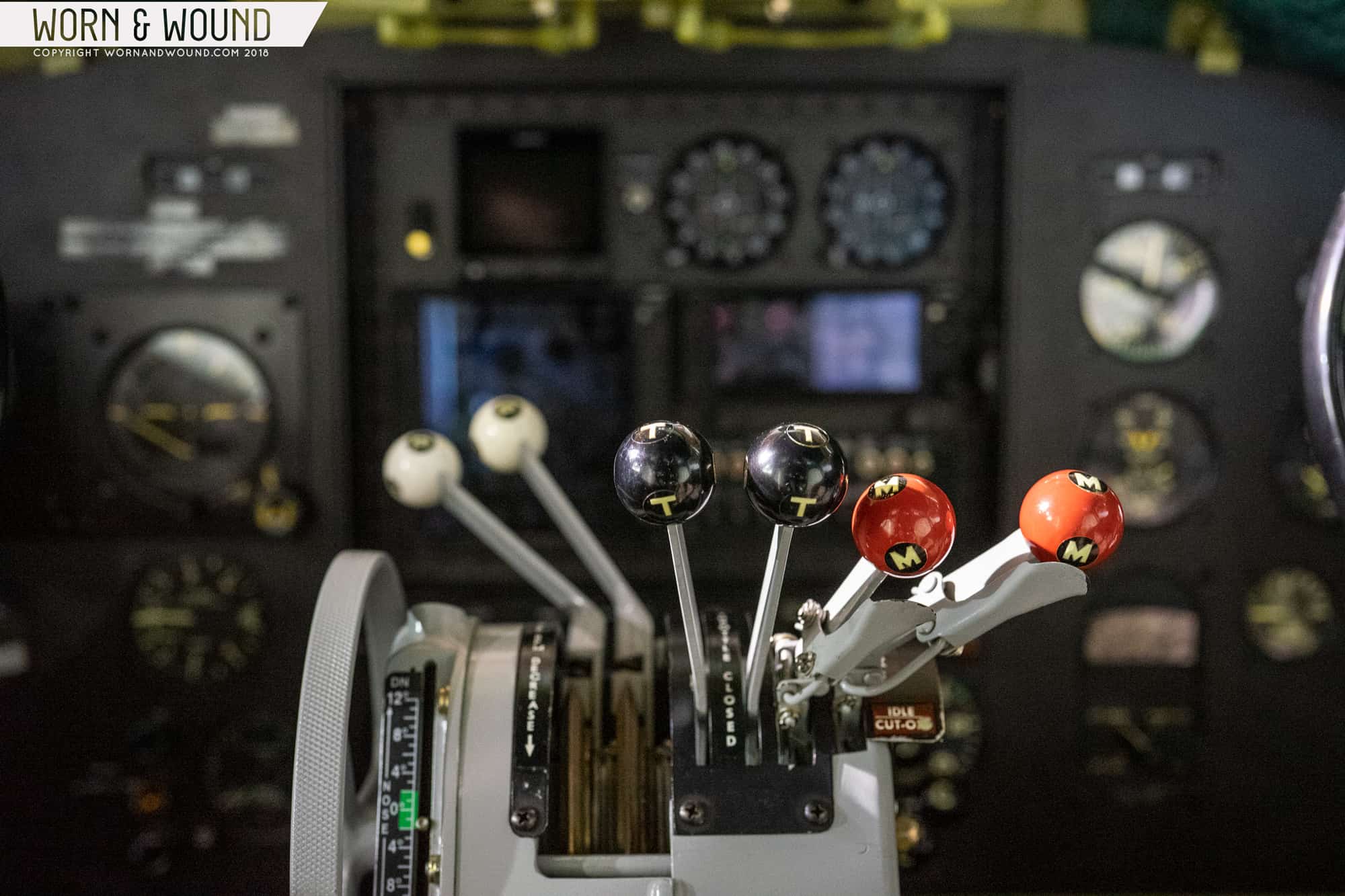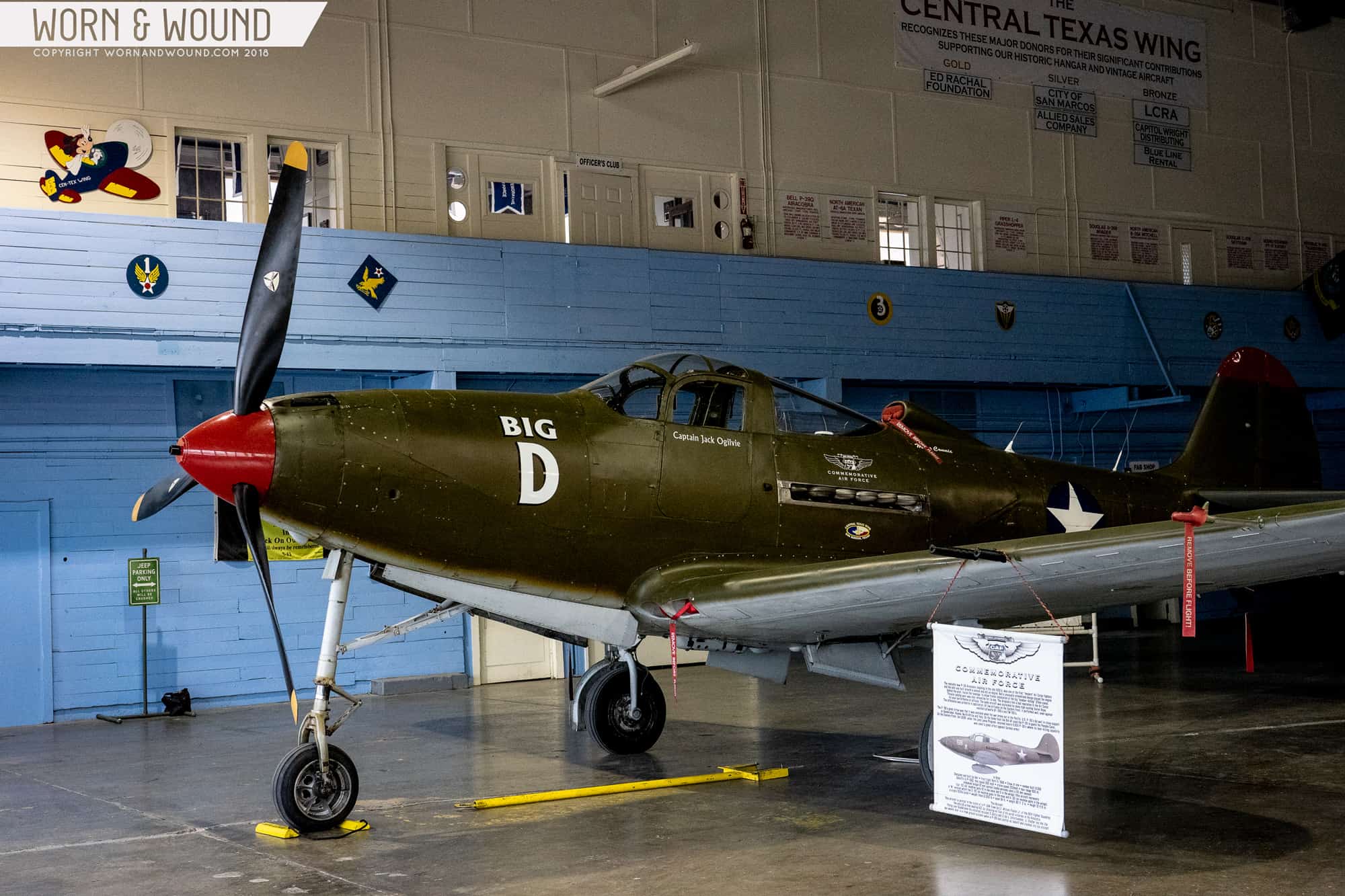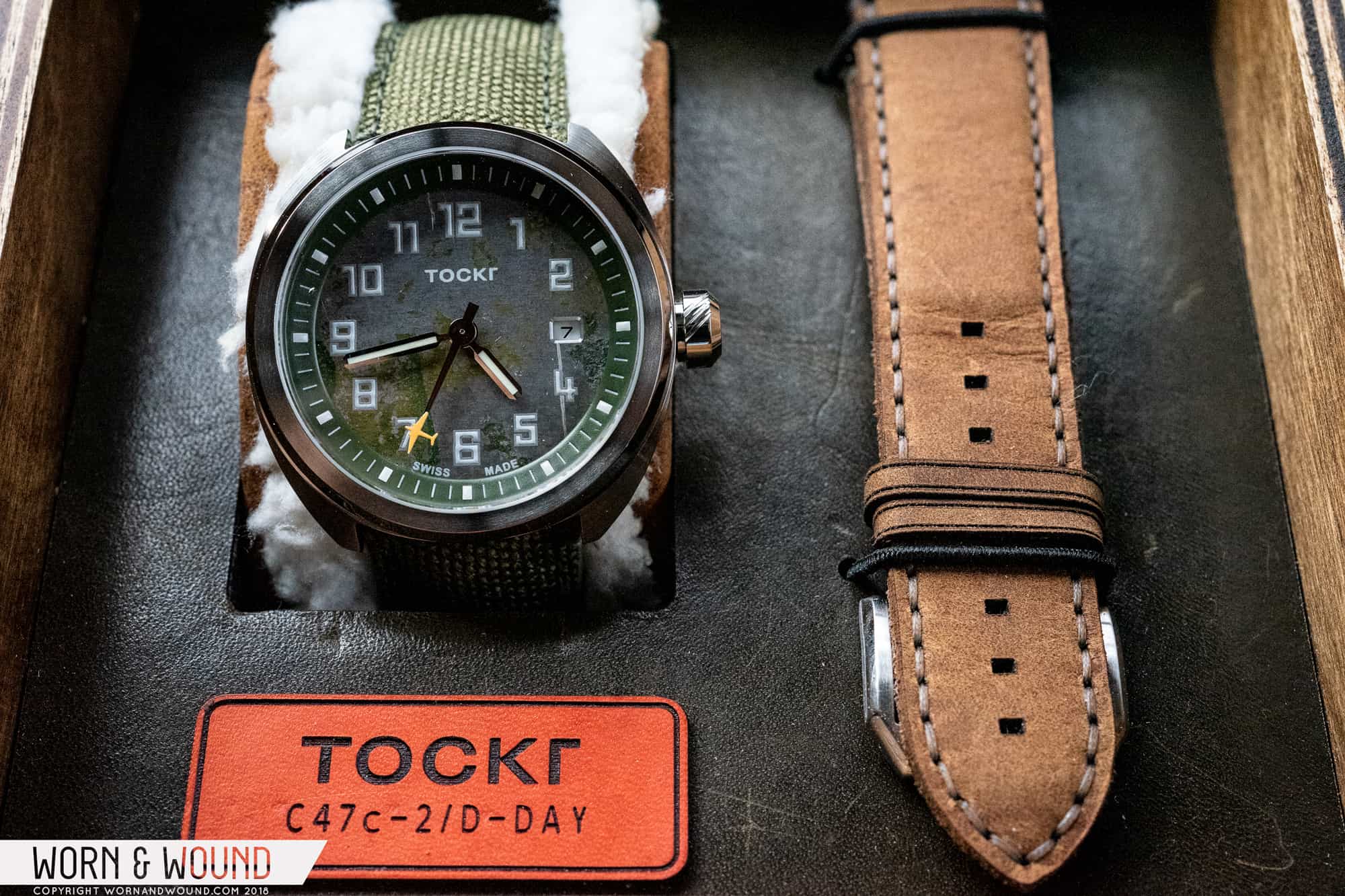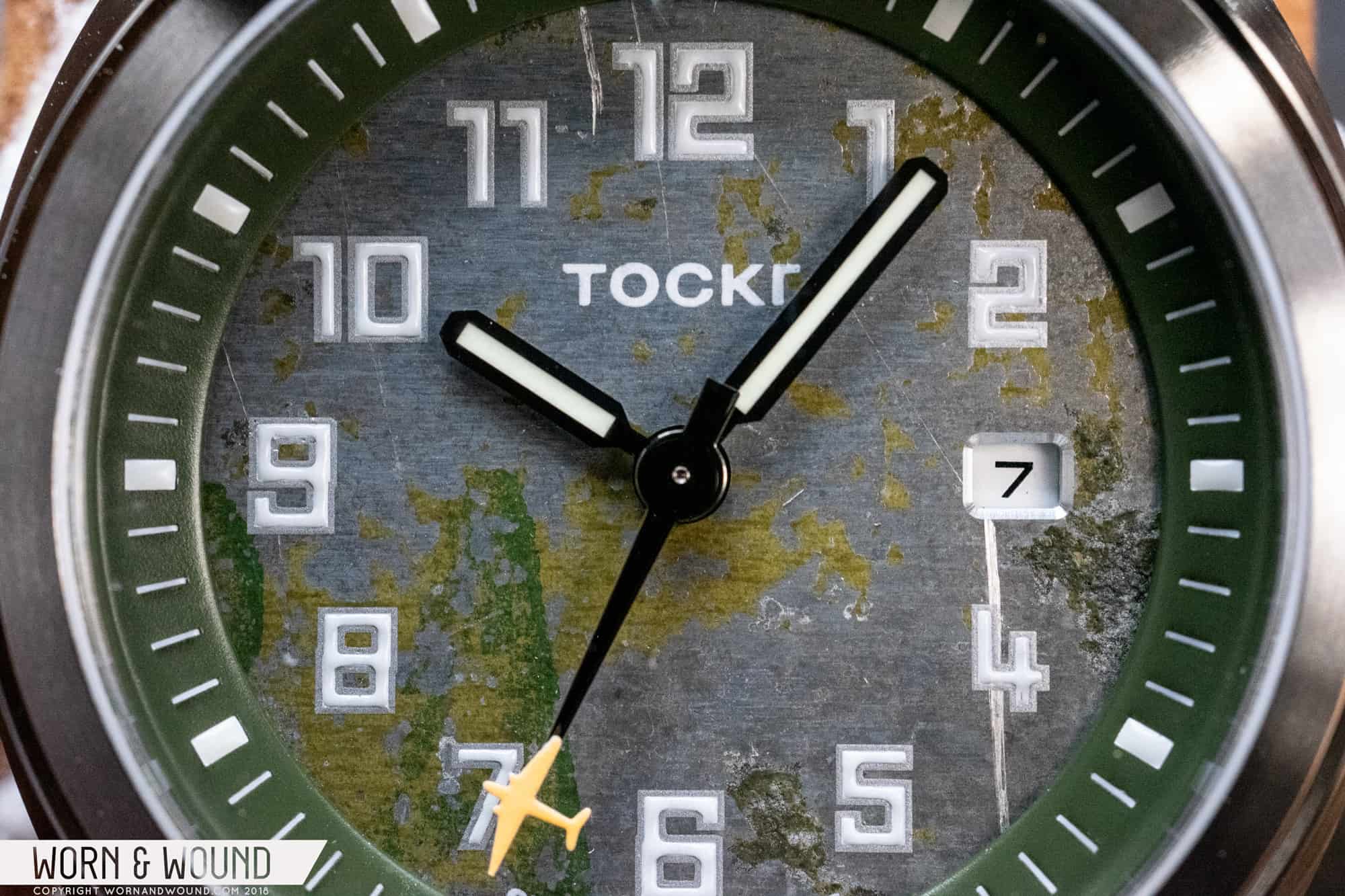Tockr makes big, bold watches, and they make no bones about it. Like that armored storm-chasing vehicle or the vintage C-47 plane, Tockr’s watches are ready for serious action—and they look the part. On wrist, the 42-millimeter D-Day watch is tall but surprisingly comfortable, as were all of the Tockr watches I tried on during this trip. Give the trend toward smaller watches, Tockr’s catalog feels fresh precisely because it cares not for said trend; instead Tockr sticks to its core values and offers unabashedly rugged designs. But we shouldn’t confuse ruggedness with a lack of subtlety. The D-Day watch is, in fact, an interesting example of how subtlety can add up to boldness.
The all-important dial takes center stage within the intentionally plain stainless steel case and bezel, thus respecting and supporting the dial’s historical significance and its own rugged aesthetics. A quick glance around the Tockr catalog will show you that such restraint is not the norm for this company.![]()
Where Tockr does ramp up its design acumen is in the packaging of the C-47 D-Day watch, which was co-designed and handcrafted by Hix Designs in Oklahoma City. Terms like handmade, handcrafted, and hand-stitched get thrown around a lot these days, but Hix’s products are so blatantly well made that these terms come across more as accurate descriptors than marketing points. Austin Ivey asked Hix to create something based on a bomber jacket, and the result is a wood, leather, and shearling package that is, literally, the only watch box that’s ever caused me to swoon. The packaging’s design is pitch-perfect; it’s execution flawless. Fans of leather goods should check out Hix’s other products, including the watch straps they make for Tockr.
Yes, Bremont included metal from a Concorde Jet in a watch recently, and REC put parts from a Spitfire in a watch, too. Obviously upcycling of metals from historically significant planes (and cars, submarines, and whatever else) into commemorative watches isn’t entirely uncommon. However, there is a palpable community connection between Mr. Ivey and the Commemorative Air Force, a connection borne of Ivey’s own (sometimes dire) experiences as a pilot, his living down the road from the CAF’s hangar, and his genuine interest in helping complete the restoration of “That’s All, Brother.” Even I, an aviation known-nothing, felt the embrace of that community while hanging in the hangar that day, and I’ll admit that my interest in WWII shipwrecks has since veered toward aviation. I would encourage anyone interested in the history of military aviation to check out your local Commemorative Air Force unit. I’m already thinking I’ll spring for a ride in one of these vintage aircraft next chance I get. Tockr
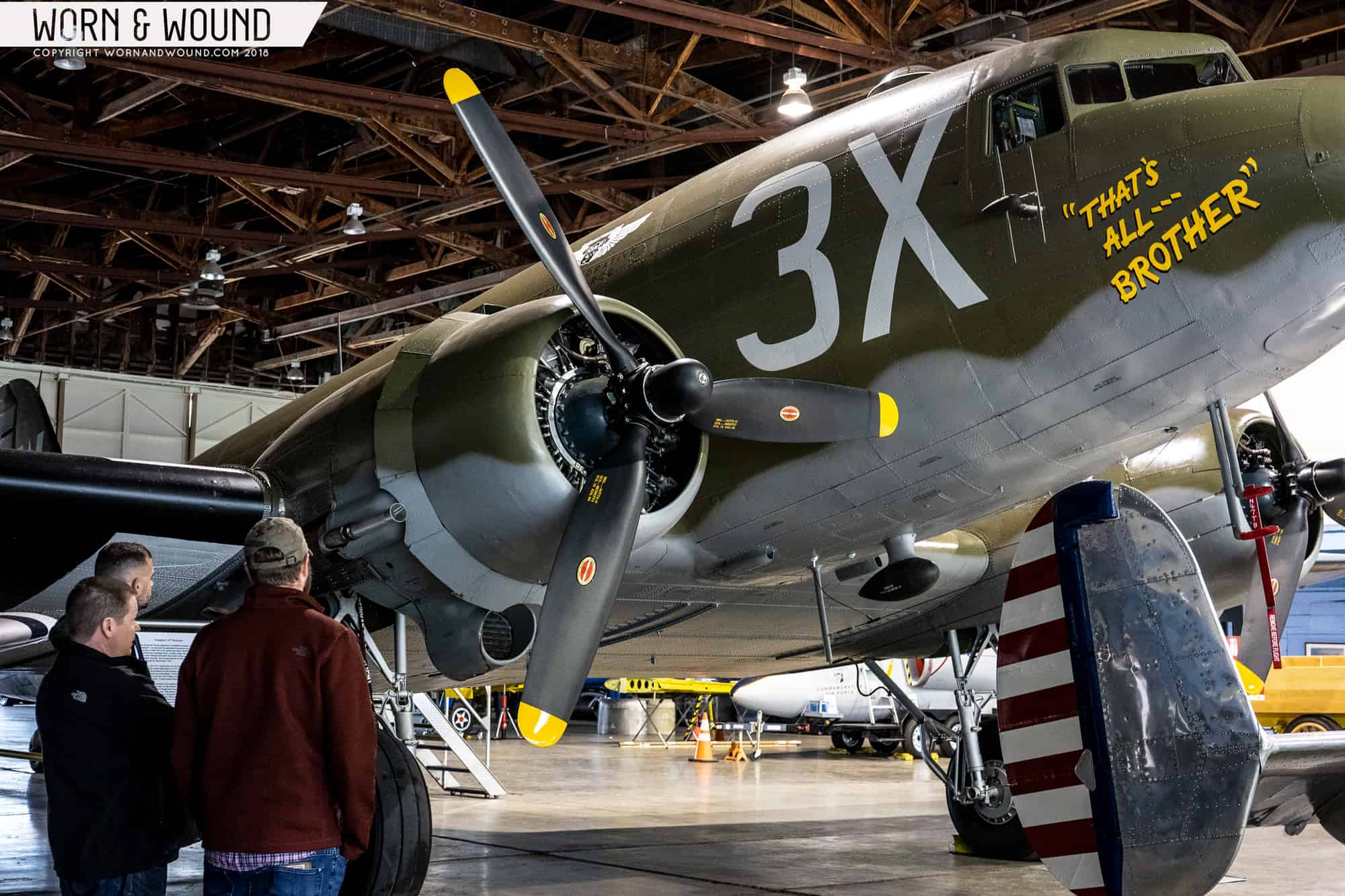









 Featured Videos
Featured Videos




